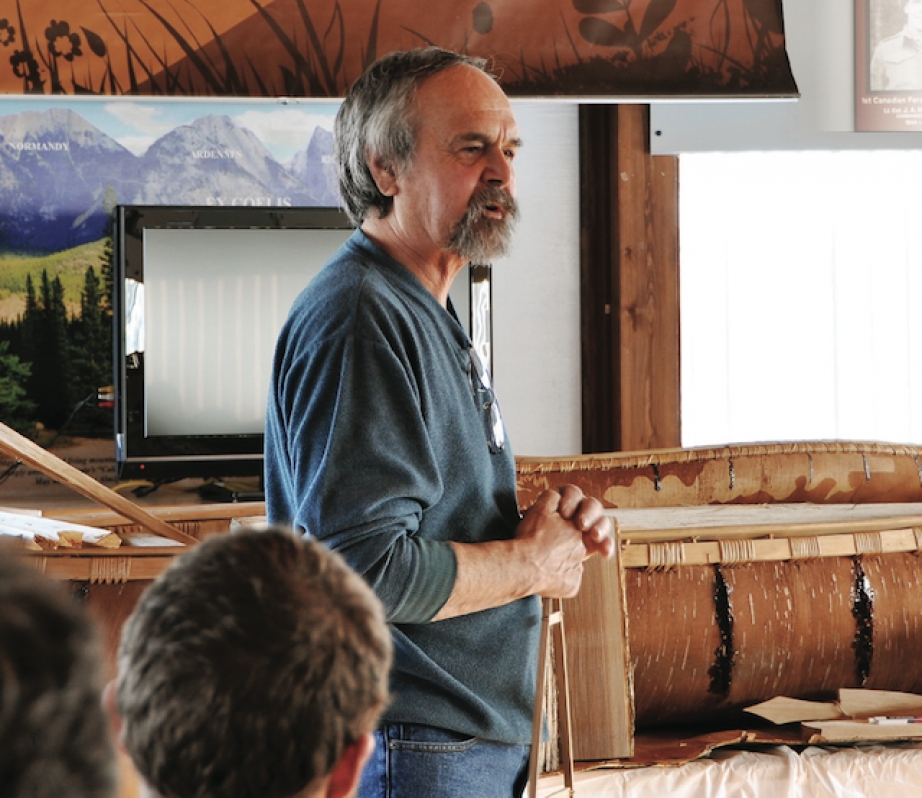“I don’t paddle unless I have to,” says Pinock Smith with his characteristic wry smile.
For the Algonquin Indian, canoe building is all about the process, not the reward. It seems counter-intuitive that a builder who doesn’t paddle could possess the know-how and inspiration, but spend a day at one of Smith’s workshops and he’ll have you convinced.
Smith grew up surrounded by community on a reserve in western Quebec. “I was never formally taught,” he says, “but I’m not self-taught either.”
He learned to build birchbark canoes through hands-on experience and exposure— the same way he shares his craft with audiences across North America.
Smith worked as a guide, trapper and carpenter until one day he decided to build a birchbark canoe for himself. “That was some 11 years ago,” he laughs, “and I still don’t have my own boat.” Each unique canoe is sold or shared with his pupils.
Since his uncle first took him through the building process step-by-step, Smith has built hundreds of birchbark canoes using the traditional methods and materials of his ancestors. “We complicate our lives so much today,” he muses, surrounded by yards of birch bark, lengths of spruce root and tin pots filled with fragrant pine resin. “I don’t see why we need complicated tools and materials and exact measurements.” With no measuring tapes or rulers anywhere in sight, Smith admits, “I couldn’t make two canoes the same if I wanted to.”
Smith’s art is in many ways about simplicity, appreciation of beauty and a connection to nature. “Listen to what the bark tells you,” he coaches his students. While Smith is seeing a decline in the availability of quality, naturally occurring materials, he believes that the spiritual experience of building is worth his efforts to preserve and promote the craft.
In an age filled with new and improved, high tech and exacting standards, Smith’s attitude is as contagious as his smile. “If you make a boat and it floats pretty well, I’d say that’s a damn good canoe.”





